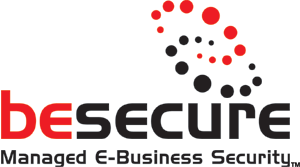- Services
-
Solutions
- Solutions
- Fraud Prevention
- Threat Detection & Response
- Identity & Access Management
- Information Protection
- Internet Of Things (IoT) Security

Our IoT security solutions unlock business value by enabling secure access to IoT data.
read more
Cyber Security Solutions
Our Cyber Security Solutions deal with challenging aspects such as fraud prevention, threat detection & response, identity & access management, IoT security, cloud security and information protection, among others.
read more -
Managed Security
- Managed Security
- HybridSIEM

HybridSIEM - Next Generation SIEM Service
read more - Connectivity
- Web Applications
Managed Security Services
Our Managed Security Services strengthen our customers cyber defense programs often at a fraction of the cost of in-house security resources utilizing BesecureCloud big data and supercomputing capabilities.
read more -
Education
- Education
- Information Security Training
- ISO 27001 Certification
- Risk Management Training
- Business Continuity Training
-
Security Awareness
A training program for security awareness will inspire and encourage everyone to practice secure computing because everyone - from management to end users - will understand that they have a vested interest in secure computing.
read more
Education
Comprehensive vendor-neutral business continuity, information security, ISO 27001, risk management certification on-premise or e-learning training courses and awareness briefings for executive management, security and system administrators and corporate users.
read more -
Certificates
- Certificates
Certificates
Entrust Datacard is one of the most trusted brands in online security with one of the most respected client bases, empowering governments, enterprises and financial institutions in more than 5,000 organizations spanning 150 countries.
read more - Events
-
About Us
- About Us
About Us
We are a leading provider of Governance, Risk & Compliance (GRC) services, Cyber Security solutions, Managed Security services, Certification Training and Awareness programs, trusted by global organizations across telecommunication, financial services, energy industries and other medium - large enterprises.
read more
Payment Services Directive (PSD2) Solutions
PSD2 and Open Banking bring speed, flexibility and choice to existing banking functions for consumers — and they will clearly lead to entirely new sets of products and services. Banks looking to capitalize on PSD2 opportunities need to think about how to position themselves in the market to offer a comprehensive solution to their customers.
Achieve basic compliance — but think bigger
The foundation for PSD2 enablement and open banking success is trusted identity. Ask us to demonstrate how efficient and easy can be to place a strong identity on your customer’s phone that lives within your mobile banking app. Consumers can use this single trusted identity to verify transactions, make online and mobile purchases, move money between accounts, access self-service kiosks, interact with ATMs and more. When consumers rely on the trusted identity you provide, your brand and your identity become the center of the consumer’s expanding financial ecosystem — while ensuring a secure experience. Our solutions allow you to extend trusted identity to more than your customers. Every person or machine that’s part of your digital ecosystem requires a trusted identity to ensure both security and great customer experiences. This means issuing trusted identities to employees, apps, networks and, eventually, devices connected to an Internet of Things (IoT) ecosystem.
Balancing PSD2 Data Sharing Requirements with GDPR Guidelines
These two critical initiatives seem to be at odds. PSD2 advocates for sharing customer data, while GDPR promises severe financial consequences for organizations that violate consumer data privacy regulations. While it seems there will be more direct guidance coming from governing bodies in the future, banks must — for the time being — balance both requirements using their best judgement. This means that banks should avoid a separate or siloed approach to their GDPR and PSD2 implementations. Approach them as a unified initiative and develop a single framework that simultaneously makes customer data available, yet protects that same data from being compromised by hackers. For help with this important balancing act, our product specialist are available to help you.
Transparent and friction less user experience
A key PSD2 requirement is Strong Customer Authentication (SCA). Because usernames and passwords don't provide sufficient security, the new directive calls for two-factor authentication for all electronic transactions. Our authentication solutions help you enable your PSD2 requirements — and they ensure a transparent and friction less user experience.
Two-Factor Authentication
The use of two independent authentication methods is mandated. If one of the methods involves a smart phone or other mobile device, security measures are required to ensure that the device being used has not been compromised. Our solutions offer the widest range of authenticators, suitable for every different customer need, including mobile and adaptive authentication options that ensure truly friction less experiences for end users
Transaction Monitoring & Fraud Prevention
PSD2 mentions the need for transaction monitoring software that analyzes risk as transactions are taking place. Our fraud prevention solutions enable fraud prevention tools with adaptive capabilities. Factors such as payment amounts, known fraud scenarios, payer/payee locations and device reputation are used to allow, challenge or stop transactions.
Dynamic Linking
Hackers have learned to insert themselves into the middle of legitimate electronic transactions after they’ve been initiated — which has created the need for dynamic linking. Our solutions link the authentication codes to specific transaction amounts and payees. If either the amount or the payee changes during a transaction, a new code is issued. Our solution — which can feature OTP codes, mobile push notifications or other authenticators — also provides a highly secure channel for transactions to be conducted.
Runtime Application Self-Protection (RASP)
The proliferation of mobile payment apps creates new opportunities for hackers. Our solutions detect anomalous behavior and block compromised apps from executing any further operations. Only authorized requests from server will be executed by the app. Even if a fraudulent entity “fools” the app into signing a transaction, the verification will fail.
